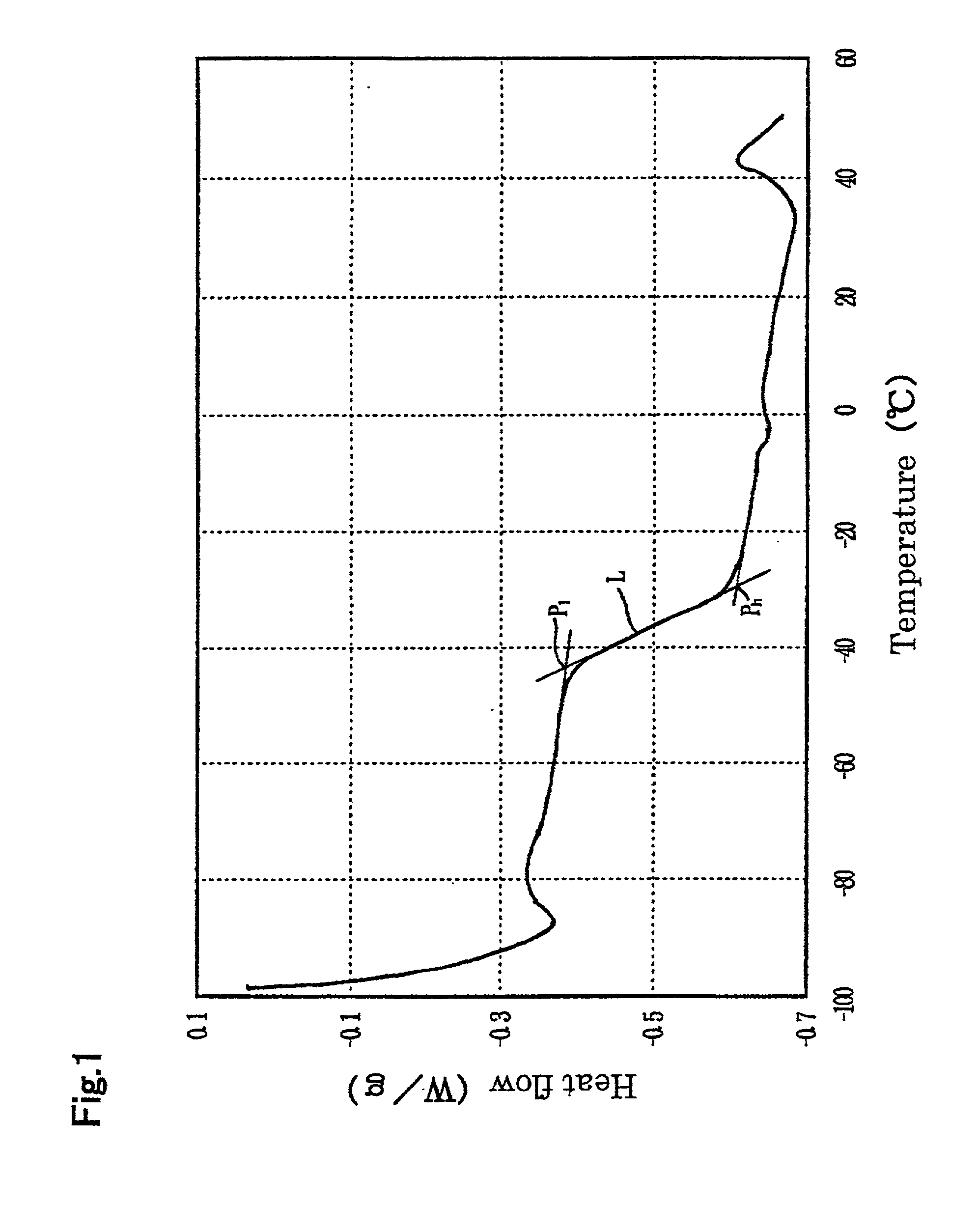Conjugated diene-based rubber, oil extended rubber and rubber composition containing the same
a technology of oil-extension rubber and diene-based rubber, which is applied in the directions of organic chemistry, transportation and packaging, inks, etc., can solve the problems of poor wear resistance, low wet skid resistance, and inability to achieve sufficient reinforcing effect,
- Summary
- Abstract
- Description
- Claims
- Application Information
AI Technical Summary
Benefits of technology
Problems solved by technology
Method used
Image
Examples
production examples 2 to 4
Oil Extended Conjugated Diene-based Rubbers [B] to [D]
[0117] A conjugated diene-based rubber latex was obtained similarly to Production Example 1 except for using 2-hydroxyethylmethacrylate, glycidyl methacrylate or methacrylic acid, as shown in Table 1, instead of diethylaminoethyl methacrylate in Production Example 1. The Mooney viscosities of the conjugated diene-based rubbers {circle over (2)} to {circle over (4)} contained in the latexes were 124 in Production Example 2, 130 in Production Example 3 and 131 in Production Example 4. Thereafter, these latexes were employed to obtain conjugated diene-based rubbers [B] to [D] each of which was extended with an aromatic oil. The monomer bound contents and the mechanical parameters of each rubber are shown also in Table 1.
production example 5
Oil Extended Conjugated Diene-based Rubber [E]
[0118] A conjugated diene-based rubber latex was obtained similarly to Production Example 2 except for changing the amount of the raw material consisted of butadiene, styrene and acrylonitrile shown in Table 1. The Mooney viscosity of the conjugated diene-based rubber {circle over (5)} contained in the latexes was 130. Thereafter, this latex was employed to obtain conjugated diene-based rubber [E] extended with an aromatic oil. The monomer bound contents and the mechanical parameter of the rubber are shown also in Table 1.
production example 6
Oil Extended Conjugated Diene-based Rubber [F]
[0119] In a polymerization vessel, 200 parts of water, 4.5 parts of rosin acid soap, 58 parts of butadiene and 42 parts of styrene were charged. Subsequently, the temperature of the polymerization vessel was set at 5.degree. C., and 0.03 parts of p-menthane hydroperoxide as a radical initiator, 0.02 parts of sodium ethylene diamine tetraacetate, 0.01 parts of ferrous sulfate heptahydrate and 0.03 parts of sodium formaldehyde sulfoxylate were added to the polymerization vessel, whereby initiating the polymerization. Once the conversion of the polymerization reached 60% diethylhydroxylamine was added to terminate the polymerization. The conjugated diene-based rubber {circle over (6)} contained in the conjugated diene-based rubber latex obtained by the similar procedure had the Mooney viscosity of 124.
[0120] Subsequently, conjugated diene-based rubber [F] extended with an aromatic oil was obtained similarly to Production Example 1. The mono...
PUM
| Property | Measurement | Unit |
|---|---|---|
| Percent by mass | aaaaa | aaaaa |
| Percent by mass | aaaaa | aaaaa |
| Percent by mass | aaaaa | aaaaa |
Abstract
Description
Claims
Application Information
 Login to View More
Login to View More - R&D
- Intellectual Property
- Life Sciences
- Materials
- Tech Scout
- Unparalleled Data Quality
- Higher Quality Content
- 60% Fewer Hallucinations
Browse by: Latest US Patents, China's latest patents, Technical Efficacy Thesaurus, Application Domain, Technology Topic, Popular Technical Reports.
© 2025 PatSnap. All rights reserved.Legal|Privacy policy|Modern Slavery Act Transparency Statement|Sitemap|About US| Contact US: help@patsnap.com

